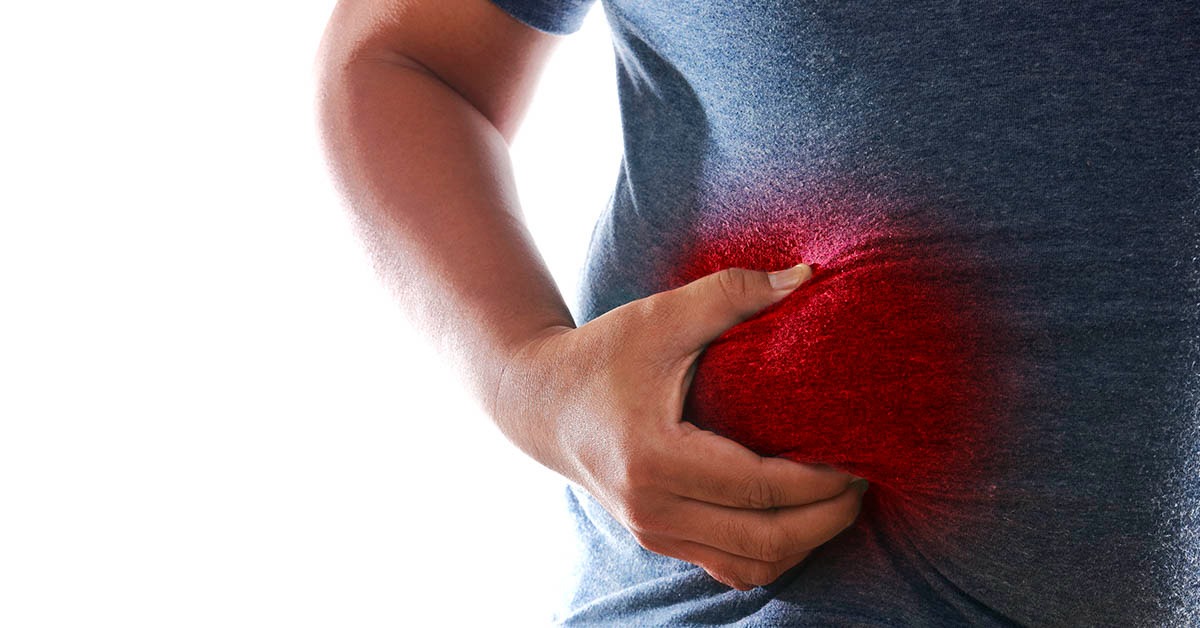Fatty liver disease, medically known as hepatic steatosis, is a condition characterized by the accumulation of excess fat in liver cells. While having a small amount of fat in the liver is considered normal, when fat makes up more than five to ten percent of the liver’s weight, it may indicate a serious underlying issue. Fatty liver is now one of the most common chronic liver conditions worldwide and can occur in people of all ages. It is primarily categorized into two types: nonalcoholic fatty liver disease (NAFLD) and alcoholic fatty liver disease (AFLD). NAFLD develops in individuals who consume little to no alcohol and is often linked with metabolic factors such as obesity, insulin resistance, and type 2 diabetes. AFLD, on the other hand, is directly related to prolonged and excessive alcohol intake, which damages liver cells and leads to fat accumulation. Both forms of fatty liver disease can progress to more severe stages, including inflammation, fibrosis, cirrhosis, and even liver failure if not managed appropriately.

Causes of Fatty Liver
The development of fatty liver disease is influenced by a variety of factors, many of which are linked to lifestyle, diet, and underlying health conditions. In the case of NAFLD, the most common causes include obesity, especially abdominal obesity, which is closely associated with insulin resistance. Insulin resistance plays a key role in the buildup of fat within the liver, as it causes the body to produce more insulin, which in turn encourages fat storage. Other contributing factors include type 2 diabetes, high blood pressure, elevated triglyceride and cholesterol levels, and metabolic syndrome. Individuals who are physically inactive or consume a diet high in processed foods and added sugars are at increased risk. Rapid weight loss or malnutrition can also trigger fat accumulation in the liver. In contrast, alcoholic fatty liver disease results from the toxic effects of alcohol on liver cells. Chronic alcohol intake impairs the liver’s ability to break down fats, leading to steatosis. Over time, continued alcohol consumption can escalate the condition to alcoholic hepatitis and eventually cirrhosis. Certain medications, genetic factors, and underlying gastrointestinal conditions may also contribute to both types of fatty liver.

Symptoms and Signs
One of the reasons fatty liver disease is often underdiagnosed is that it typically develops without any obvious symptoms in its early stages. Many people may live for years without knowing they have a problem. However, as fat continues to accumulate and liver inflammation increases, some individuals begin to notice signs of discomfort. The most common early symptom is a persistent feeling of fatigue, which is often attributed to other causes. Some people may experience a dull ache or pressure in the upper right side of the abdomen where the liver is located. As the disease progresses, other symptoms can include unexplained weight loss, weakness, mild jaundice where the skin or whites of the eyes become slightly yellow, and swelling in the abdomen due to fluid buildup. Blood tests may reveal elevated liver enzymes, particularly ALT (alanine aminotransferase) and AST (aspartate aminotransferase), which signal inflammation or liver cell damage. In more advanced stages, signs of liver scarring or cirrhosis, such as easy bruising, confusion, or bleeding, may appear. Because symptoms are often vague or absent, routine health screenings are important, especially for those with risk factors.

Diagnosis and Evaluation
Diagnosing fatty liver disease typically starts with a routine physical examination and blood tests that indicate abnormal liver function. If a healthcare provider suspects fatty liver, imaging tests such as an abdominal ultrasound may be ordered. Ultrasound is one of the most commonly used tools for detecting fat buildup in the liver because it is non-invasive and widely available. In some cases, more detailed imaging, like computed tomography (CT) or magnetic resonance imaging (MRI), may be recommended to assess the liver’s condition. To evaluate the extent of inflammation or fibrosis, doctors may use a specialized technique called transient elastography (FibroScan), which measures liver stiffness. In situations where the diagnosis remains uncertain or when advanced disease is suspected, a liver biopsy may be performed. During this procedure, a small sample of liver tissue is collected and examined under a microscope. Although it is invasive, biopsy remains the gold standard for diagnosing nonalcoholic steatohepatitis (NASH) and determining the degree of liver damage. Early and accurate diagnosis is critical for effective management and preventing further progression.

Treatment Strategies
The cornerstone of fatty liver treatment is lifestyle modification, particularly in the case of NAFLD. Since no specific medications have been approved to treat fatty liver directly, doctors focus on addressing the underlying causes. One of the most effective interventions is gradual and sustained weight loss. Losing between five to ten percent of total body weight has been shown to reduce liver fat, improve liver enzyme levels, and, in some cases, reverse inflammation. Dietary changes are also essential. A liver-friendly diet typically emphasizes whole foods, including vegetables, fruits, lean protein, whole grains, and healthy fats such as those found in nuts, seeds, and olive oil. Limiting added sugars, refined carbohydrates, saturated fats, and highly processed foods is equally important. Incorporating regular physical activity—such as walking, swimming, or cycling—into a weekly routine helps reduce liver fat and improves overall metabolic health. For individuals with coexisting conditions like diabetes, high cholesterol, or high blood pressure, proper management of these disorders is crucial. Medications may be prescribed to control blood glucose, lower cholesterol, or reduce inflammation, but they are considered supportive rather than curative for fatty liver itself. For AFLD, complete abstinence from alcohol is necessary to stop liver damage from worsening. In some cases, individuals with advanced liver disease may require specialized care or consideration for a liver transplant.

Home Remedies and Natural Support
While lifestyle changes are the foundation of fatty liver treatment, several home remedies and natural practices may support liver health when used alongside medical advice. Green tea is rich in antioxidants known as catechins, which may help reduce liver fat and inflammation according to some studies. Moderate consumption of black coffee has been linked to a lower risk of fibrosis and may offer protective effects. Curcumin, the active compound in turmeric, has anti-inflammatory properties and may benefit people with liver conditions when taken under medical supervision. Omega-3 fatty acids, commonly found in fatty fish like salmon and sardines, may reduce liver fat and improve cholesterol levels. Some people use apple cider vinegar to support metabolism and digestion, although more research is needed to confirm its direct effects on liver fat. Herbal options like dandelion root tea have traditionally been used to promote liver function, but these should be used cautiously and only with a doctor’s guidance, especially in people with underlying health issues. Adequate hydration and good sleep also contribute to liver repair and metabolic regulation. While these natural methods can provide additional benefits, they are not substitutes for evidence-based medical treatment.

Long-Term Outlook and Prevention
Fatty liver disease can often be reversed, particularly in its early stages, if individuals make sustained changes to their health habits. The long-term prognosis depends on how early the condition is diagnosed and how consistently the underlying causes are managed. Without intervention, fatty liver can progress to more serious conditions like NASH, cirrhosis, or liver cancer. However, people who adopt healthier eating patterns, engage in regular exercise, and avoid harmful substances such as alcohol can significantly reduce their risk of liver damage. Preventive strategies include maintaining a healthy weight, monitoring blood sugar levels, avoiding unnecessary medications that strain the liver, and undergoing regular checkups if one is at higher risk due to family history or metabolic conditions. Raising public awareness about fatty liver and reducing the stigma around liver disease are essential steps toward early detection and effective care. Healthcare professionals also emphasize the importance of individualized treatment plans that address each person’s unique medical profile and lifestyle needs.
Conclusion
Fatty liver disease is a growing global health concern but is highly manageable when identified early. Through a combination of clinical diagnosis, lifestyle intervention, and natural support, many individuals can reverse the effects of fatty liver and restore normal liver function. The key to success lies in education, prevention, and a commitment to long-term health. As research continues, more treatment options may become available, but for now, prevention and healthy living remain the most effective tools against fatty liver disease.
